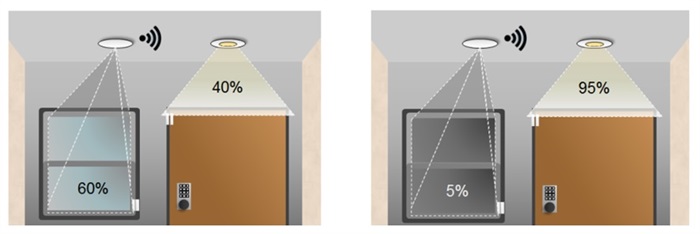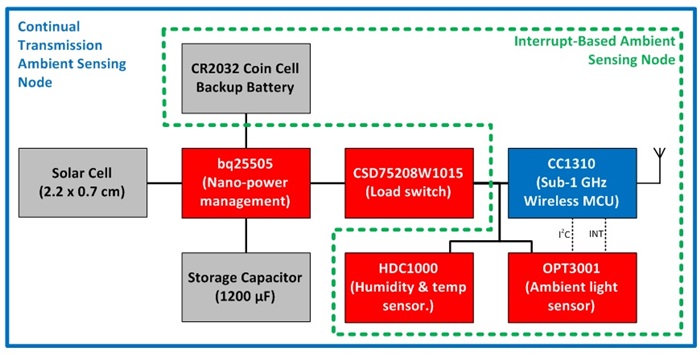SSZTCC2 august 2015 OPT3001
Most buildings are old, and for the majority of old buildings the mantra is, “If the AC is on, the building-control systems are working.” This way of thinking is ineffective in today’s climate of rapid urbanization. New buildings use more efficient building-automation systems with technologies that provide machine control along with energy-cost savings. In short, the control systems of the old must catch up to the new.
A common end goal for retrofitting older buildings with advanced building automation technologies is energy conservation. In commercial and residential homes, ambient-light sensors are one way to achieve that goal. Ambient light sensors can detect the intensity of light in a given area. Now imagine pairing that sensor to a low-power microcontroller and a wireless communications platform. Lighting control made easy!
Let's say that 60% of necessary light is entering a room through skylights and windows. A wireless ambient light sensor platform can sense the intensity of that light and dynamically adjust the artificial light source to produce the other 40%. Since the artificial light source isn’t running at full power when natural light is also present, the building will consume less energy (Figure 1).
 Figure 1 External vs. Artificial Light
Intensity Balancing Examples
Figure 1 External vs. Artificial Light
Intensity Balancing ExamplesAmbient light sensing is not limited to area lighting: It also has applications in display backlights. When extra light is projected onto a display, the contrast can appear washed out and be hard to see or read. A few examples include thermostat displays, TVs, and electronic billboards and signs. Decreasing the brightness of these displays saves significant power in low-light conditions.
So you have your ambient-light sensor solution, but the next question you may be asking is, “What about battery management and power for a daylight-sensing application subsystem?” This is where energy harvesting comes into play. If there is already sunlight present, why not also use it to power the light-sensing platform? That’s exactly what we are showing in a new TI Designs reference design. When light levels are sufficient, the design runs 100% on solar energy, with a total energy cost of $0 (Figure 2). A battery backup maintains normal operation in low-light periods. Battery life can be as long as 10 years, allowing little-to-no maintenance for this subsystem.
 Figure 2 Energy Harvester for Light and
Environment Sensor Nodes Block Diagram
Figure 2 Energy Harvester for Light and
Environment Sensor Nodes Block DiagramFor older buildings, there is no need to fret. You can easily and cheaply retrofit fancy building automation systems into existing building-control systems. Small solution sizes paired with wireless communication enable a simple peel-and-stick installation. Or you can build other Internet of Things (IoT) wireless-system nodes on a daylight-harvesting platform to create a wide variety of sensing applications that control automation or collect data.
What Other Sensing Nodes and Applications Are of Interest to You? Leave Your Answers in the Comments!
Additional Resources:
- Watch our training series to learn more about optimizing wireless sensor nodes.
- Learn more about the Backlight and Smart Lighting Control by Ambient Light and Proximity Sensor Reference Design.
- Consider the OPT3001 ambient light sensor for your next design.
- Check out two TI Designs
reference designs for humidity and temperature nodes:
- TIDA-00484
- TIDA-00374
- Read about temperature sensors for building automation in this application note.